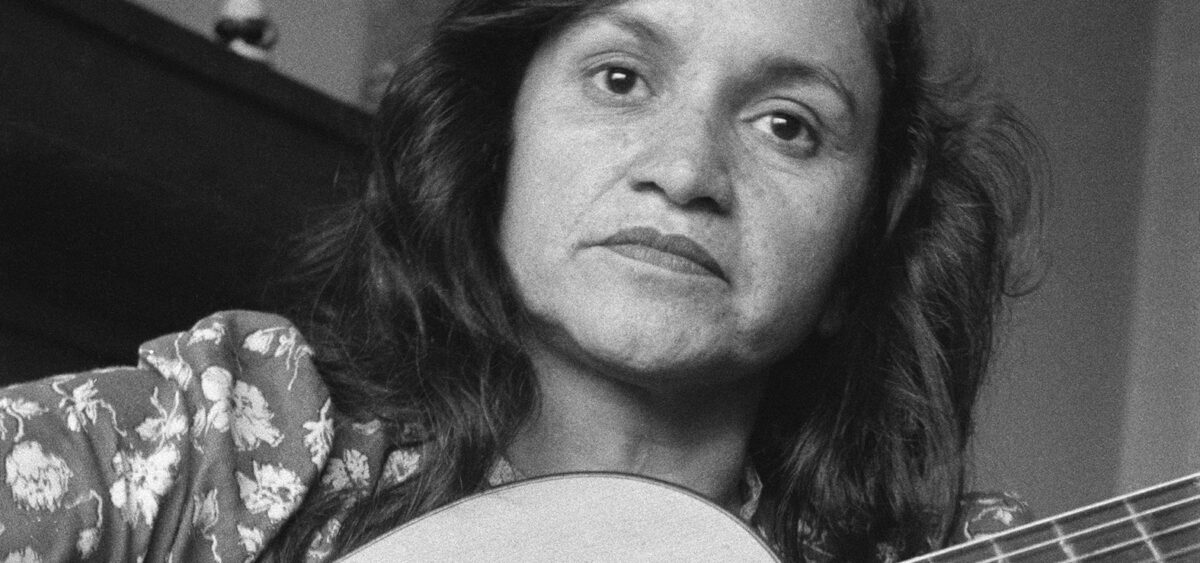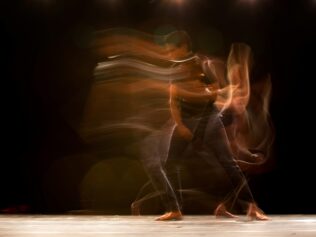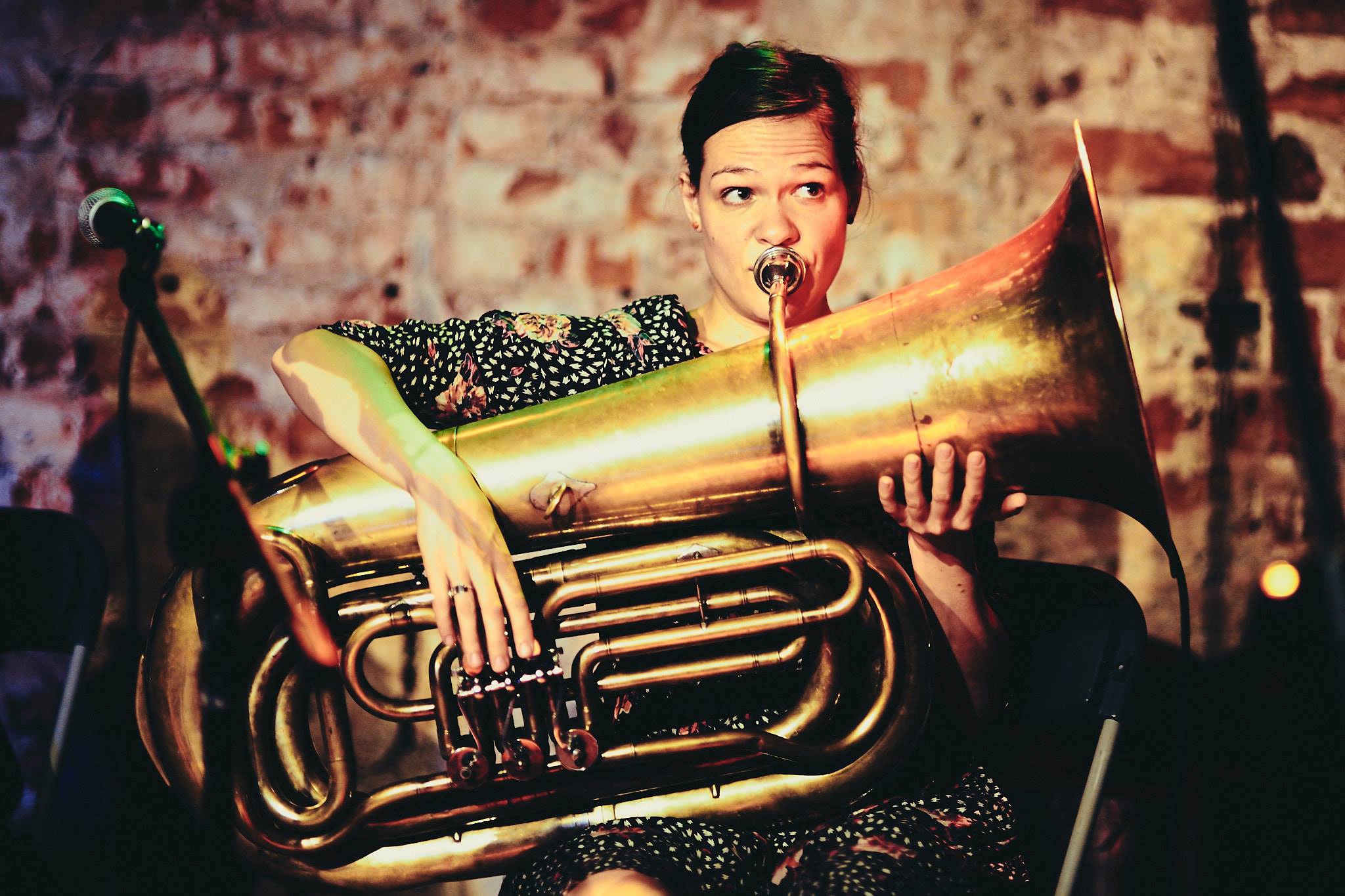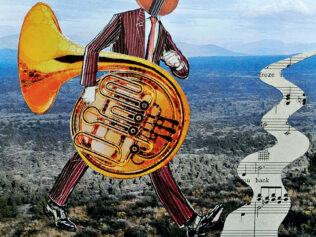
She’s one of Chile’s great legends. The first time she sang abroad was in Warsaw. Her songs are found in the repertoires of Mercedes Sosa, Buena Vista Social Club, U2 and Faith No More. In her most famous song, she paid tribute to her life; six months later, she took her own life in a circus tent.
Gracias a la vida que me ha dado tanto (“Thank you to the life that has given me so much”) – so begins the song familiar to practically everyone across Latin America.
When Violeta Parra enters a studio in Santiago de Chile to record this song in August 1966, she is 49 years old, with two marriages behind her, 10 albums recorded, at least one big heartbreak, and considerable debts.
The song will see dozens of interpretations, and its author – the pioneer of the Latin American protest song – will one day be cited by the Pope and the President of Chile. Half a century later, Rolling Stone magazine will recognize the album Últimas composiciones (“Latest Compositions”) as the greatest Chilean album of all time. Engaged and political, ‘La Violeta’ will become the voice not only of Chile but of the entire continent.
In a metallic, mesmerizing voice, she sings:
Thank you to the life that has given me so much
It gave me two eyes, when I open them
I can perfectly distinguish black from white
And in the high sky its starry background
And in the crowd the man that I love […]
Thank you to the life that has given me so much
It gave me the steps of my tired feet
With them I have traversed cities and puddles
Beaches and deserts, mountains and plains
And your house, your street and your courtyard.
Gracias a la vida is a great hymn to life. Yet just before Violeta Parra recorded this song, she had tried to commit suicide.
***
Born in 1917, she was a hippie before the hippies arrived, the grandmother and mother of Latin American female songwriters, a self-taught embroiderer whose work was exhibited at the Louvre, a folklorist who travelled thousands of miles with a guitar and a tape recorder. An enthusiast, whose efforts preserved 3000 songs from the Chilean villages and mountains. And above all, an artist who was able to transform them, creating brilliant contemporary songs about love, death and exclusion.
In her native Chile, she is an icon of the stature of Bob Dylan; she is the subject of several biographies, a biopic awarded at the Sundance Film Festival (Violeta Went to Heaven by Andrés Wood) and the series based on it, as well as dozens of academic dissertations.
However, her biographers are not always in agreement. For example, they diverge on whether Violeta’s family, who came from the south of Chile, were really as poor as she made out. According to the findings of her last biographer, Victor Herrero, the families of her parents – dressmaker Clarisa Sandoval and music teacher Nicanor Parra – in fact belonged to the lower middle class, and Violetta only experienced real financial problems after the death of her father from tuberculosis in 1931. However, there is no doubt that Nicanor and Clarisa’s nine children (Clarisa also had daughters from a previous marriage) turned out to be extraordinary. Violeta’s eldest brother, Nicanor Parra, was a famous Chilean poet and winner of the Spanish Nobel – the Cervantes Prize. Hilda, Roberto and Eduardo were successful singers, Lautaro was a famous guitarist, and Óscar made a career in the circus. Their children were also successful musicians.
The fact that Violeta avoided poverty doesn’t mean that her childhood and youth in the poor agricultural south were a bed of roses. Her father drank and was known to be violent. Violeta carried the scars of childhood smallpox on her face all her life and often referred to herself as “the ugliest woman in the world”. She took up the guitar at the age of nine – partly for pleasure, but also to support her mother when her father was drinking away his wages.
As a teenager, she sang with her brothers and sisters on the streets, in bars and circuses. Music was a necessity for her, but above all, it was her passion. Against the advice of her eldest brother, who she called hermano padre (brother-father), she soon abandoned formal education and devoted herself to singing. As a duet act with her sister Hilda, she began to earn a living in Santiago de Chile, where her family had moved in 1927 in search of a better life.
“Her life was spent in public, with a guitar in her lap. She sang in homes, on the streets, in taverns, in fields, in theatres, circuses, cabarets, social clubs […], on squares, ships, trains, in studios, concert halls, stadiums… She had been singing since she was a girl, she sang with nine of her 11 brothers and sisters, she sang in a dozen countries and hundreds of forgotten villages; she sang to protest, to remember, to seduce, to forget, to smile, to cry. She sang to cause confusion and to overcome it, she sang because she wanted to thank life and because she sensed the proximity of death,” wrote Colombian journalist Daniel Samper.
She sang and toured all over the country, even when she got married – a rare level of independence in her day. It was mainly her communist views that connected her with her husband Luis Cereceda, a railwayman. For both of them, this was the only permissible world view in a country ripped apart by inequality and poverty.
“Why aren’t you a Communist?” asked Violeta in a letter to her friend, a politician from Argentina. “This age belongs to us.”
But she couldn’t agree with Cereceda on other matters. “You want a maid, not a companion,” she told him reproachfully. “Fine, do your art, I’m leaving,” he said during one of their quarrels. The young upholsterer Luis Arce soon took his place. After him came others, usually much younger than Violeta.
***
Violeta Parra’s career was reportedly influenced by a conversation with her brother. Nicanor had just returned from a literary scholarship at Oxford. Although Violeta was no longer performing as ‘Violeta de Mayo’, with her flamenco repertoire and blood-red painted lips (which appealed to the taste of the thousands of Spanish refugees from the civil war, who had been brought to Chile by Pablo Neruda), her songs still weren’t greeted with enthusiasm by her hermano padre.
“You have fantastic material at your fingertips that nobody has been interested in so far,” he insisted. He was referring to the traditional Chilean songs, handed down from generation to generation, which he thought were under threat of extinction due to mass migration from the countryside to the cities.
It is unknown whether this was the conversation that initiated Violeta’s adventure with Chilean folklore – that’s what Nicanor claimed, but some of his sister’s biographers think he exaggerated his role in her career. He was supposedly inspired by the famous story of the Spanish composer Manuel de Falla, who sent his friend Federico García Lorca on similar missions to preserve the ‘real’ flamenco.
However it happened, in the early 1950s Violeta – nicknamed ‘La Violenta’ (‘The Fierce One’) by her brother – set off on a musical journey that was to last for many years. She began by interviewing older people from the working-class suburbs, then gradually ventured further and further. Initially with just a guitar and a pencil, later with a tape recorder that was apparently imported from Poland, she listened to and recorded over 3000 traditional songs: cuecas, mazurkas, laments and dances.
She infected others with her enthusiasm: the well-known Radio Chilena offered Violeta her own show, “Sing Violeta Parra”, which was soon breaking popularity records. Migrant workers from Santiago de Chile listened and were consumed with longing for their hometowns; meanwhile, the metropolitan intellectual elite were discovering completely unknown lands, the traditional music of their own country seeming as exotic as music from Africa. Violeta felt she had a historical mission.
Had she remained in the role of researcher and collector, she would probably be known only to ethnographers today. However, on the basis of the traditional cuecas, she soon began to create her own ‘anticuecas’, as she called them. Many of her seemingly simple, stylized folk texts are in fact exceptional poetry, and the traditional Andean instruments and sounds enrich the atonal music underpinned by sophisticated concepts.
She was a small and not particularly pretty woman, who went without makeup and a hairdo despite the trends of the era. A guitar or charango – a Bolivian mandolin – strapped to her chest. Dressed rather sloppily. Inconspicuous? Perhaps not, because her explosive personality and unwavering self-confidence must have attracted attention. And when she started singing, others gained confidence too.
“Violeta outshone everyone. She appeared with her guitar and suddenly, all people wanted was Violeta and her guitar,” said Nicanor Parra.
The guests at Pablo Neruda’s birthday party, which her older brother had got her invited to, were also taken with her: “Under a tall chestnut sat a dark-haired woman with an ordinary face without makeup, dressed rather poorly,” one of the guests recalled. “She strummed something on the guitar and suddenly, without ceremonies or warning, she began to sing. She didn’t look at the listeners who quickly formed a circle around her. She played a country waltz, which induced such fascination and overwhelming sadness that everyone just froze.”
She was called a ‘phenomenon’.
But this wasn’t simply a new ethnic fashion. The revolutionary 1960s were still a little way off, but Parra was the messenger of good news: times were coming where there would be hope for a better, fairer tomorrow. In Chile, the face of these times would be Salvador Allende, and the music – new, but developed from local roots – nueva canción.
***
In her canciones, Violeta could be valiant and full of anger. “The hungry ask for bread, the militia give them lead […] Fortunately, I have a guitar to cry out my pain,” she sang in the song La carta (“The Letter”). “What will the Holy Father say when they slaughter his dove?” she asked in a song about a communist executed at Franco’s orders. She could also be painfully intimate, as when she wrote about the death of a child: “A bell will lull him in the cradle of the earth, and the rain will wash his face in the morning.”
“I sing of the difference between truth and lies, otherwise I don’t sing at all,” she explained in Yo canto a la diferencia (“I Sing of the Difference”). In fact, her songs were omnivores that liked to feed on autobiographical matter in any form. And this matter was sometimes exceptionally succulent.
What was the life she was grateful for? Let’s just say that, as a woman and an artist, she didn’t do things by halves. It wasn’t just that she broke down the stereotypes and conventions of the era; she didn’t seem to know they even existed. At times, she was really living on the edge.
Her second marriage to Luis Arce coincided with the beginning of her musical success and a prestigious award for folklore artist of the year. This is what led her to Warsaw. Her trip to Poland for the World Youth Festival in 1955 is associated with the most dramatic episode of her life. When she received the invitation, her daughter Rosa Clara was only six months old. “I’m going to Europe for two months,” she said, consumed by her mission to popularize folklore. The clan was to look after the children. “I’m so lucky,” she wrote of her stay in Poland. “The magical fiesta is beginning, the continents are embracing.”
When she reached Paris, from where she was hoping to conquer the rest of Europe, she received a telegram informing her of the death of Rosa Clara. She was shocked, but she continued on her journey and only returned to Chile two years later. She had been hugely successful in Paris, but her guilt and depression haunted her all her life. “I am a wretched mother, since I left them alone, and you see, a flower is missing from the bouquet,” she wrote to her brother almost a decade later.
She desensitized herself in three ways: through music, art and love. In addition, she felt deeply certain that what she was doing made sense… Concerning art: while bedridden for several months with hepatitis, boredom forced her to concentrate on embroidering. She started with a bedspread, but her creative energy was inexhaustible. Soon she was creating large format tapestries in the art brut style. But this was still not enough for her – soon, she was also producing ceramics and papier mâché sculptures.
During one of her stays in Paris, she visited the Louvre in the company of film-maker Alejandro Jodorowsky. “We, poor Chileans without tradition, are surpassed by all this,” he reportedly said. “You’ll see, soon my work will be here,” she replied.
She managed to reach the Louvre director through a friend at the Chilean embassy (apart from everything else, she was also her own best agent), who, impressed by her work, sent it to the Department of Decorative Arts at the Louvre. There, during the Latin American boom, when “the Latin Quarter was adjacent to South America”, she was greeted with open arms. “The first Latina at the Louvre,” the Chilean newspapers soon announced.
Concerning love: her biography is strewn with information on numerous romances. “She was an excellent lover, as she was a cook, but she was also wounded by love. The process of seduction she performed was delicious, like the dance of enamoured peacocks. She had three or four great loves and a few hummingbirds, those who fly in, stay for a moment and fly away,” her son Andrés, a well-known musician and the author of her biography, told the Spanish daily El País.
One man who could not be described as a hummingbird was Gilbert Favre, a Swiss man she met at her birthday party. He had come to Chile with an ethnographer acquaintance of his; he played the clarinet. During the party, he knocked on her bedroom door and asked what she was doing alone in her room on her birthday.
“I don’t like parties,” she replied. He stayed with her until morning.
Her association with Gringo, as she called him, 18 years her junior, was part passion, part mother-son relationship. It was under her strict eye that Favre grew to be an excellent musician who played the quena, a Peruvian flute. When he left for Bolivia, probably escaping from their explosive relationship, she wrote one of her most beautiful and painful songs about the break-up: Run Run se fue pal norte (“Run Run Went Up North”). The fact that it’s sung in a calm, subdued voice completely devoid of melodrama makes it all the more poignant.
Run Run went up north
I don’t know when he’ll come back
He’ll come back for the birthday
Of our loneliness.
***
This song, as well as Gracias a la vida, was included on the album Últimas composiciones (“Latest Compositions”), which was released in autumn 1966.
The album was a summary of Violeta Parra’s career comprising only her own compositions. It contained everything she had learned over several decades. At the premiere she said that these were her most beautiful, most considered songs. Unfortunately, the album went almost unnoticed, thus adding financial problems and a sense of professional defeat to her heartbreaks and complicated – often due to her caring but extremely imperious nature – relationships with her children and siblings.
The finale of her despair took place in a circus tent in the La Reina suburb of Santiago de Chile, in which she had wanted to realize another major project: an informal folklore university and music club combined. However, the tent – far away from the centre – was deserted, and she fell into a spiral of frustration and debt. And it was there, on 5th February 1967, around 5pm, that she shot herself in the head.
During the time of right-wing dictator Pinochet, who tried to cleanse Parra’s work of its political content, it was widely believed that her depression had been caused by unrequited love. Was it possible that purely sentimental reasons had driven to suicide the woman who wrote to Gilbert Favre, the love of her life: “I feel that I want a man, but work overwhelms me. With an aching heart I board the train that takes me away from you, but I do so without melodrama, weakness, or doubt”?
She also left a suicide note, but the family never disclosed its contents. Apparently, it showed none of the appreciative tone of Gracias a la vida, but rather bitterness. The few who have read it say that it ends with the words: “I don’t give a shit about goodbyes.”
Translated from the Polish by Kate Webster










